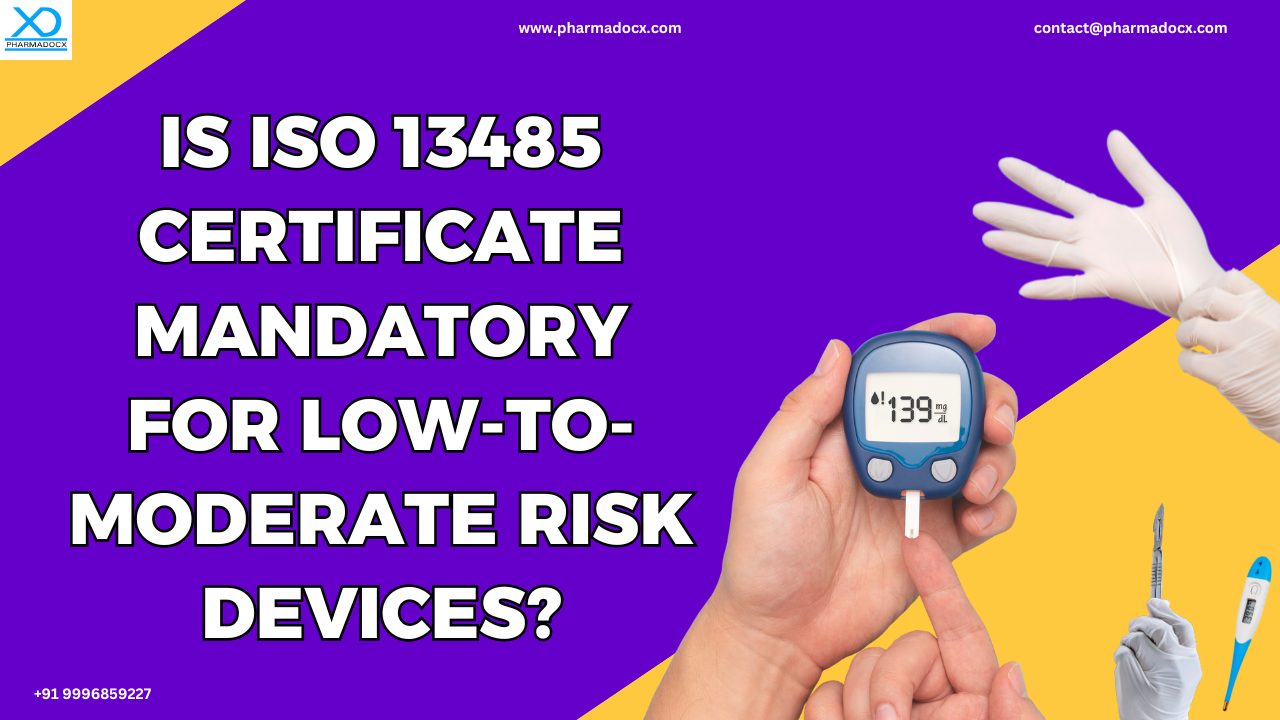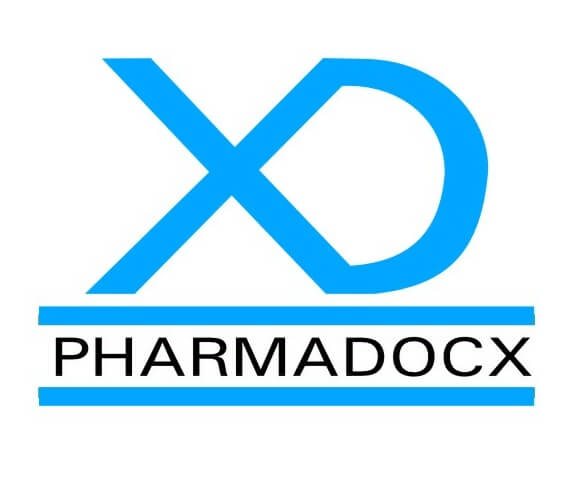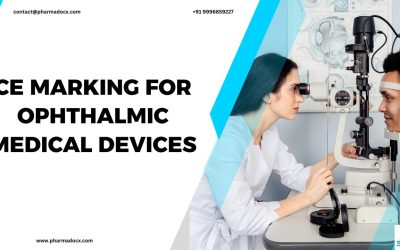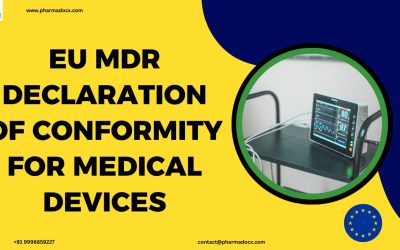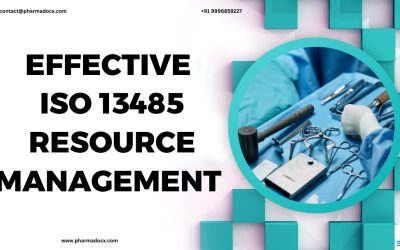The ISO 13485 guidelines provide a structured framework for establishing a quality management system that meets global standards. A properly designed and implemented QMS will ensure every step in the medical device production process is controlled and monitored. An ISO 13485-compliant QMS increases the credibility and marketability of the medical devices. Furthermore, ISO 13485 certification increases patients’ and healthcare professionals’ trust in these medical devices. A question often asked is “Is ISO 13485 certificate mandatory for low-to-moderate risk devices?” Read on to find out.
What is the need for quality management system in medical device industry?
The quality management system (QMS) in medical device industry is a structured framework established to consistently manufacture safe and effective devices. The medical device QMS is a set of procedures, policies, and processes implemented by manufacturers throughout the medical device’s lifecycle. Basically, it covers all aspects of medical device production. Medical device manufacturers deploy QMS to ensure standardization to comply with industry regulations. Moreover, medical device QMS helps improve product quality and safety as well as standardize processes and documentation. Additionally, it enhances operational efficiency. Furthermore, it helps meet and exceed customer expectations. Thus, a robust QMS forms the basis of manufacturing medical devices of consistent quality, safety, and efficacy.
What is ISO 13485 certificate?
ISO 13485 guidelines set standards for the medical device industry QMS. Stringent regulations are in place for every step of the medical device manufacturing process. ISO 13485 provides best practices for the quality management system in the medical device industry. Hence, medical device companies can reap benefits by implementing the ISO 13485 guidelines.
The ISO 13485 guidelines provide internationally recognised quality benchmark for medical device manufacturers. Thus, medical device companies can use the ISO 13485 certificate to demonstrate superior product quality to regulatory bodies. Furthermore, ISO 13485 certification fosters trust among regulatory officials, stakeholders, and customers. Additionally, having an ISO 13485 certificate can speed up the process of market approval. Importance of having an ISO 13485-compliant QMS:
- Demonstrates compliance with internationally accepted standards for medical device QMS.
- Shortens time required to obtain regulatory approval.
- Eases out CDSCO medical device license application process.
- Reduces product recalls and chances of after-market failures.
What are low-to-moderate risk medical devices?
CDSCO has classified medical devices based on the level of risk associated with device. This classification system has been formulated to ease out the medical device license application system. The CDSCO medical device class will determine the regulatory approach and the license required. Hence, it is vital for medical device manufacturers to understand the CDSCO medical device classification system. The medical devices have been categorised into four classes, Class A, B, C, or D, in increasing order of risk associated. We have detailed on the low and low-to-moderate risk medical devices.
- Low-risk devices: Low-risk devices are categorised as the Class A medical devices. Although these devices are simpler in design and have the lowest risk, they have to still conform to the CDSCO medical device regulations. They must comply with the documentation, QMS, and post-market surveillance requirements. Examples: Stethoscopes, thermometers, gloves, elastic bandages, hot water bags, surgical dressings, etc.
- Low-to-moderate risk devices: Low-to-moderate risk devices are categorised as the Class B medical devices. Being low-to-moderate risk devices, Class B medical devices warrant more rigorous regulatory requirements, greater oversight by a notified body or authority, and robust quality processes. Examples: Dental curing lights, suction machines, syringes, surgical instruments, blood glucose monitoring devices, nebulizers, contact lenses, etc.
Is ISO 13485 certificate required for low-to-moderate risk devices?
ISO 13485 guidelines are a globally recognized standard that provides a structured framework for meeting regulatory benchmarks to ensure device quality and safety. The guidelines are designed to be flexible to cover medical devices of varying risk level. Notably, ISO 13485 certification is given considerable weightage in the medical device regulatory environment. CDSCO regulations for medical devices vary with associated risk level. A commonly asked question is “Is ISO 13485 certificate required for low-to-moderate risk devices?”
Although certain medical devices have a low-to-moderate risk level, their quality will have a significant impact on patient outcome. Hence, medical device manufacturers will still have to manufacture high-quality, safe, and effective low-to-moderate risk medical devices.
Thus, establishing a robust QMS per ISO 13485 guidelines will ensure consistent regulatory compliance and production of high-quality products. This will improve product credibility and speed up the market approval process. However, ISO 13485 certificate for low-to-moderate risk medical devices is not mandatory. Although the certification as such is not mandatory as per Indian medical device regulatory framework, the QMS has to be established as per ISO 13485 guidelines. Notably, for low-to-moderate risk medical device manufacturing license application, the QMS is required to demonstrate compliance with ISO 13485 guidelines.
Hence, having the certificate will strengthen the license application. Having a robust CDSCO medical device manufacturing license application will streamline the license approval process. Thus, having the ISO 13485 certification will reduce the time required to obtain regulatory approval to market your device.
ISO 13485 requirements for low-to-moderate risk devices
We have highlighted the specific ISO 13485 requirements for low-to-moderate risk devices.
- Design and development controls: The design and development controls requirement under ISO 13485 guidelines is critical, especially for manufacturing Class B medical devices.
- Supplier controls: Raw material quality will impact final product quality. Hence, it is vital to vet supplier quality. All third-party vendors are required to meet industry quality standards.
- Sterility and cleanliness: Sterility and cleanliness should be in focus for both reusable and disposable devices.
- Documentation and traceability: Proper documentation is very essential. Clear, current, and accessible documents that reflect all product changes should be maintained for regulatory compliance.
- Risk management: The risk management provision should be integrated from concept to post-market surveillance.
A step-by-step guide to securing ISO 13485 certificate for low-to-moderate risk devices
By aligning your systems with these ISO 13485 standards, you can have a smooth regulatory journey.Securing the ISO 13485 certification can be a complex and daunting task. Hence, we have prepared this step-by-step guide to secure the ISO 13485 certificate.
- Gap analysis: Evaluate your current QMS practices against ISO 13485 requirements.
- Documentation: Create and compile documents, such as SOPs, device master records, plant master files, risk files, etc.
- QMS implementation: Establish a robust and effective medical device QMS across departments.
- Internal audit: Prior to the actual audit, conduct internal audits to identify areas for improvement.
- Certification audit: A notified body is required to evaluate your quality management system.
- Ongoing compliance: Maintain continuous compliance through updates, internal audits, and by implementing CAPA systems.
Pharmadocx Consultants: Your trusted partner for ISO 13485 certification
By implementing a robust quality management system as per ISO 13485 guidelines, companies can stay ahead in this competitive and regulated industry. With our support, completing the ISO 13485 certification process is going to be a cake walk. We have extensive knowledge of the CDSCO medical device regulations and ISO 13485 guidelines. We will guide you through every stage of the certification process.
- We provide end-to-end assistance in setting up an ISO 13485-compliant QMS system.
- We will help prepare all documents required for audits and certification process.
- Our team will perform gap analysis to identify areas of non-compliance and shortcomings.
- We will perform mock audits to better prepare you for the actual ISO 13485 audit.
- As a bonus, we will guide you throughout the CDSCO license application process.
Email at [email protected] or call/Whatsapp on 9996859227 to secure your ISO 13485 certificate in a hassle-free manner.

